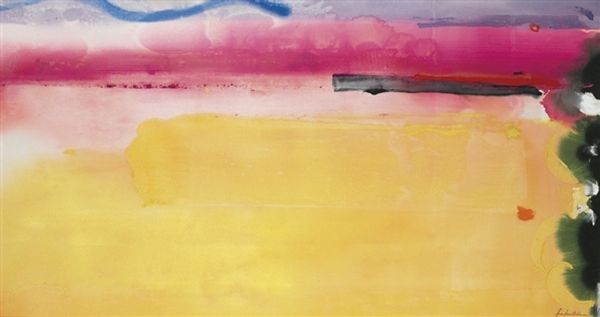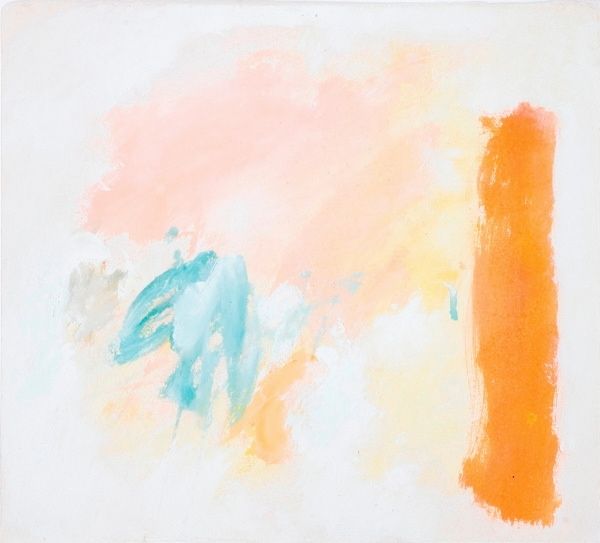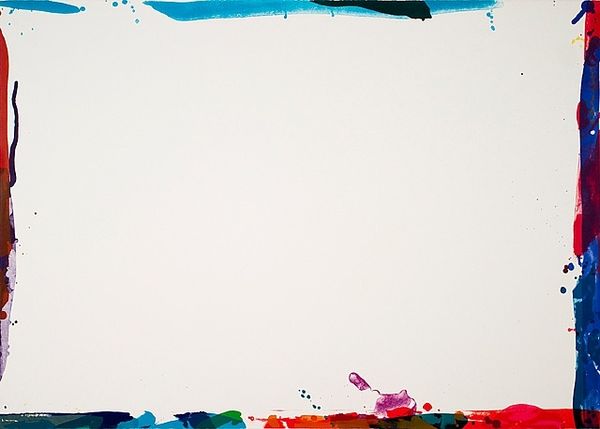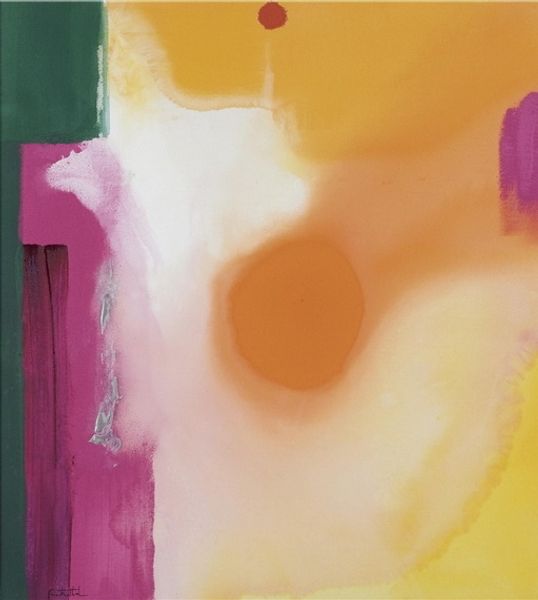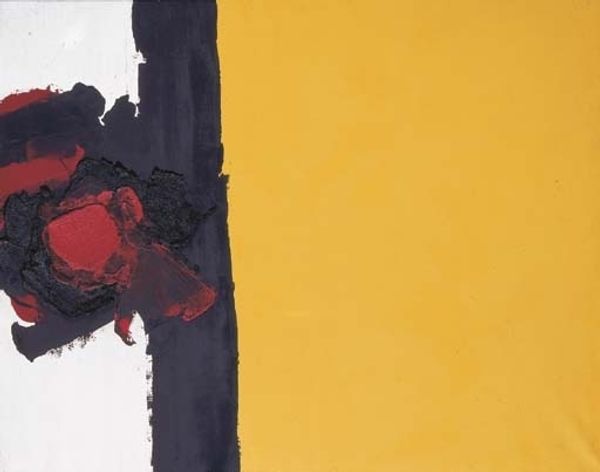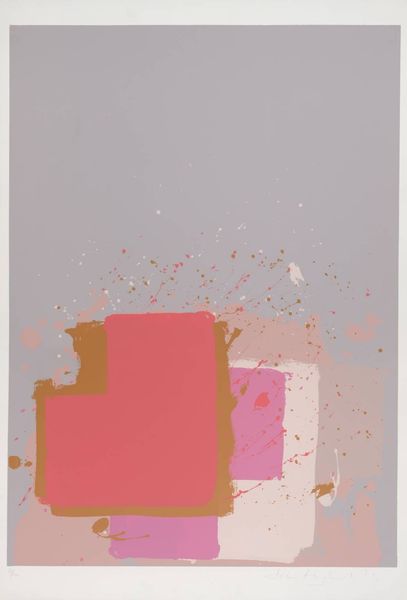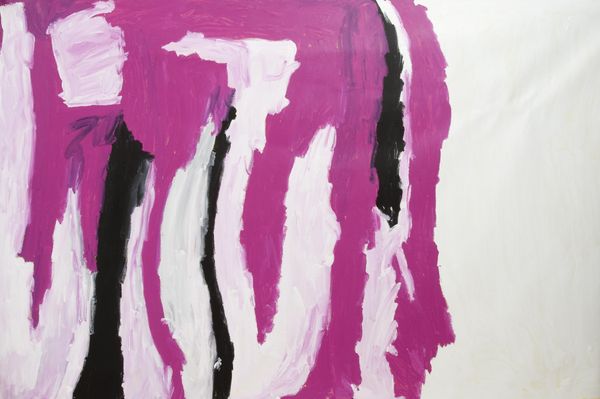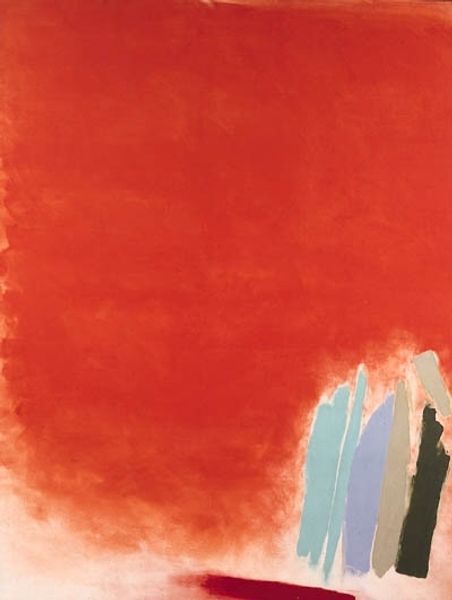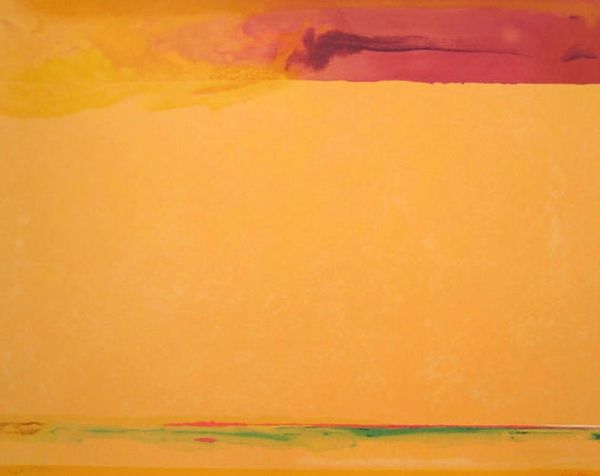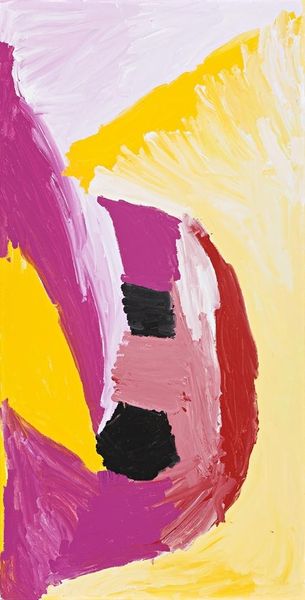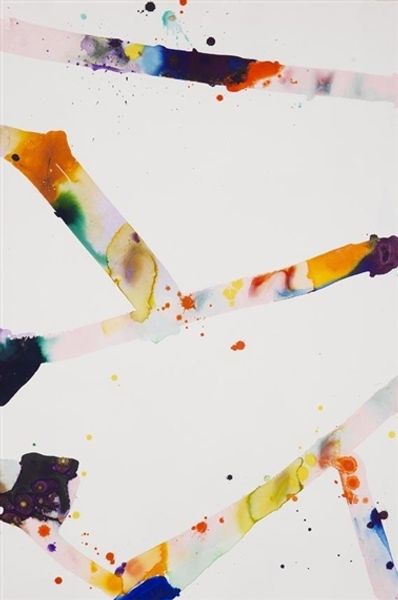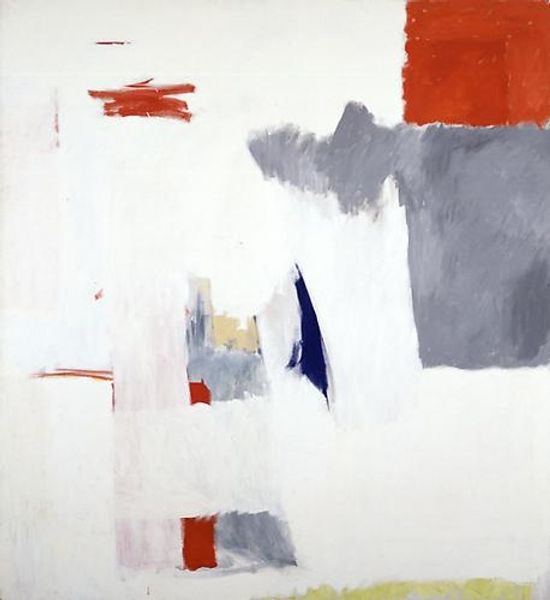
acrylic-paint
#
abstract-expressionism
#
abstract expressionism
#
acrylic-paint
#
form
#
neo expressionist
#
acrylic on canvas
#
geometric-abstraction
#
abstract-art
#
abstract art
Copyright: Friedel Dzubas,Fair Use
Curator: This is Friedel Dzubas' "Entrance," created in 1970. Dzubas was a key figure in the development of color field painting. He was an immigrant of Jewish descent who escaped Nazi Germany, landing in the vibrant art scene of New York City, a backdrop that heavily influenced his style and philosophy. Editor: My initial response is one of serene lightness. The pale hues against that off-white background...there's almost a weightlessness to the composition. The shapes, simple as they are, feel balanced, though strangely unresolved. Curator: Considering the socio-political tensions of the 60s and 70s, there’s a tension inherent in abstract expressionism generally. It existed outside of any defined representational form or message, but in doing so, offered a retreat, an escape into pure feeling and color in an otherwise turbulent period. It allowed individuals to create work, even if non-objectively, within politically volatile environments. Editor: Interesting, because I'm seeing the raw acrylic on the canvas. There’s a tactile quality that really strikes me; it’s almost sculptural. But I keep coming back to how each shape's edges seem to disintegrate. It creates this dissolving effect that contradicts that solid, blocky quality. Curator: Exactly! It is worth exploring the institutional support Dzubas received and how this allowed him freedom of practice to emphasize pure color. Think of figures like Clement Greenberg who advocated for artworks whose themes consisted merely of their own elements; Dzubas falls neatly into this. He even at one point used Magna acrylic paints to get the smooth colors you see here. Editor: So, it’s a deconstruction, right? Paring painting down to its essential components – color, form, texture—to explore its essence without overt socio-political narrative. Curator: Precisely. Color Field Painting served as a critical transition, pushing back on the figurative impulses of traditional painting while resisting the commercialism and Pop influence beginning to dominate at the time. Its emergence paved the way for process art, minimalism and beyond. Editor: It’s funny; seeing these shapes interact—grey, ochre, lavender—it makes me think of how different things are ushered into space. "Entrance", that is precisely how light must move as it refracts across a form; dissolving at the seams where those individual geometries cease to have distinction, but are now pure presence. Curator: Understanding the historical conditions is, I believe, indispensable in truly perceiving Dzubas’ aesthetic choice and why it mattered. He took formal techniques that privileged color and expanded them to an unprecedented degree. Editor: And seeing his exploration of color, brushwork and scale, divorced from any prescribed message… it becomes powerfully resonant and evocative. Something about that invites you in, yes, precisely “Entrance.”
Comments
No comments
Be the first to comment and join the conversation on the ultimate creative platform.
